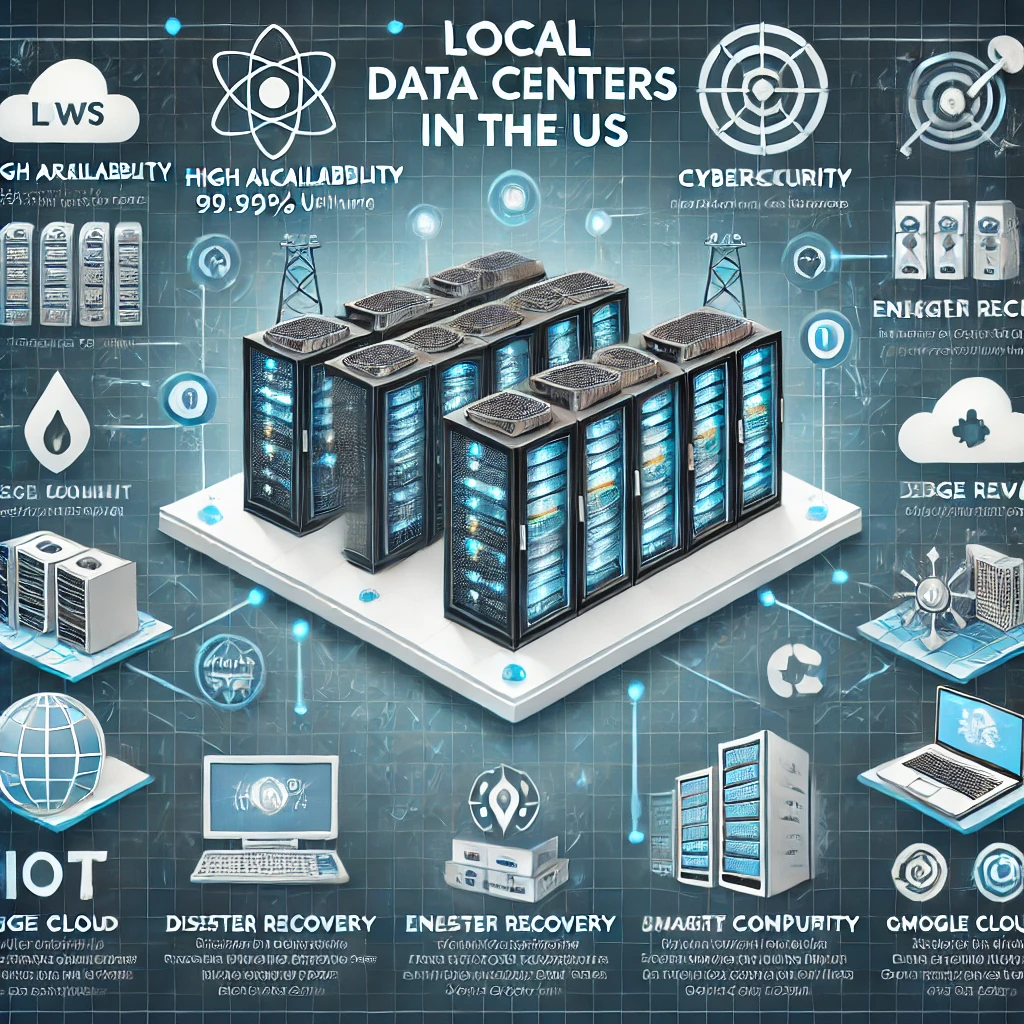Key Features of Local Data Centers in the US
Introduction
Local data centers in the United States play a crucial role in supporting businesses, government agencies, and tech companies by offering high-performance computing, storage, and networking solutions. Unlike hyperscale data centers that cater to global needs, local data centers focus on regional businesses and organizations, providing tailored solutions with a focus on security, compliance, and efficiency.
Why Choose a Local Data Center?
Organizations choose local data centers for several reasons, including:
- Lower Latency – Reduced data travel distance ensures faster response times.
- Compliance with Regulations – Ensures adherence to data sovereignty laws.
- Better Support and Maintenance – Onsite teams provide hands-on assistance.
- Cost-Effective Solutions – Competitive pricing for regional businesses.
Key Features of Local Data Centers
1. High Availability and Redundancy
- Local data centers ensure 99.99% uptime with redundant power supplies and network connections.
- Uninterruptible Power Supply (UPS) systems and backup generators prevent downtime.
- Redundant networking pathways ensure continuous connectivity.
2. Advanced Security Measures
- Physical Security: Biometric access control, 24/7 surveillance, and armed guards.
- Cybersecurity: Firewalls, intrusion detection systems, and AI-driven threat monitoring.
- Compliance Standards: Adherence to SOC 2, HIPAA, and ISO 27001 security certifications.
3. Scalability and Customization
- Local data centers offer customizable solutions to fit small businesses, startups, and enterprises.
- Scalable infrastructure allows businesses to expand their IT requirements as needed.
- Hybrid cloud solutions integrate public and private cloud computing.
4. Energy Efficiency and Sustainability
- Many US local data centers use renewable energy sources such as wind and solar power.
- Energy-efficient cooling systems, including liquid cooling and hot/cold aisle containment, reduce power consumption.
- Sustainable building designs and carbon-neutral initiatives are becoming standard.
5. Disaster Recovery and Business Continuity
- Local data centers provide disaster recovery solutions for data backup and system resilience.
- Offsite backups and geographically redundant sites ensure data is secure in case of local outages.
- Managed disaster recovery services help businesses recover quickly from unexpected events.
6. Edge Computing Capabilities
- With the rise of edge computing, local data centers process data closer to users, reducing latency.
- This is particularly beneficial for IoT devices, autonomous vehicles, and smart city applications.
- Edge data centers enable real-time analytics and decision-making.
7. 24/7 Support and Managed Services
- Local data centers provide round-the-clock technical support to ensure seamless operations.
- Managed services include server maintenance, security monitoring, and data migration assistance.
- Dedicated customer service teams offer personalized solutions based on client needs.
8. Hybrid and Multi-Cloud Connectivity
- Businesses can integrate their on-premises infrastructure with public cloud platforms like AWS, Microsoft Azure, and Google Cloud.
- Local data centers support multi-cloud strategies, allowing organizations to choose the best cloud services for their workloads.
- Cloud connectivity ensures data redundancy, workload balancing, and cost efficiency.
Key Locations for Local Data Centers in the US
Several US cities have become prime locations for local data centers due to their infrastructure, energy availability, and network connectivity. Some top regions include:
1. Northern Virginia
- Home to many enterprise and government data centers.
- Direct access to major internet exchange points.
2. Dallas, Texas
- Favorable business climate and low electricity costs.
- Centralized location for national data distribution.
3. Silicon Valley, California
- Strong tech ecosystem with leading companies.
- Advanced research and AI-driven infrastructure.
4. Chicago, Illinois
- Large colocation facilities with redundant power grids.
- Serves financial and healthcare industries.
5. Phoenix, Arizona
- Stable climate with minimal natural disasters.
- Low-cost energy solutions for sustainable data centers.
The Future of Local Data Centers in the US
With the rapid digital transformation, local data centers will continue to evolve to meet new demands. Key future trends include:
- AI-Driven Data Management – AI will optimize energy efficiency and security.
- 5G Integration – Local data centers will support next-gen mobile networks.
- Blockchain for Data Security – Enhanced encryption and decentralized storage.
- Increased Automation – Software-defined infrastructure for self-managed operations.
Conclusion
Local data centers in the US are crucial for businesses that require secure, low-latency, and scalable IT solutions. Whether supporting regional enterprises or enabling edge computing, these data centers offer essential features that drive modern digital services. As technology advances, their role will become even more significant in ensuring business continuity, data security, and high-performance computing.



